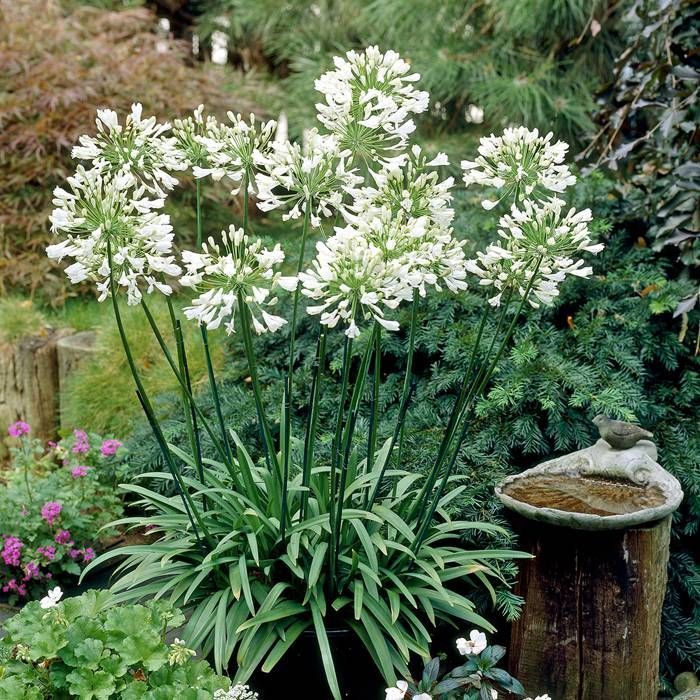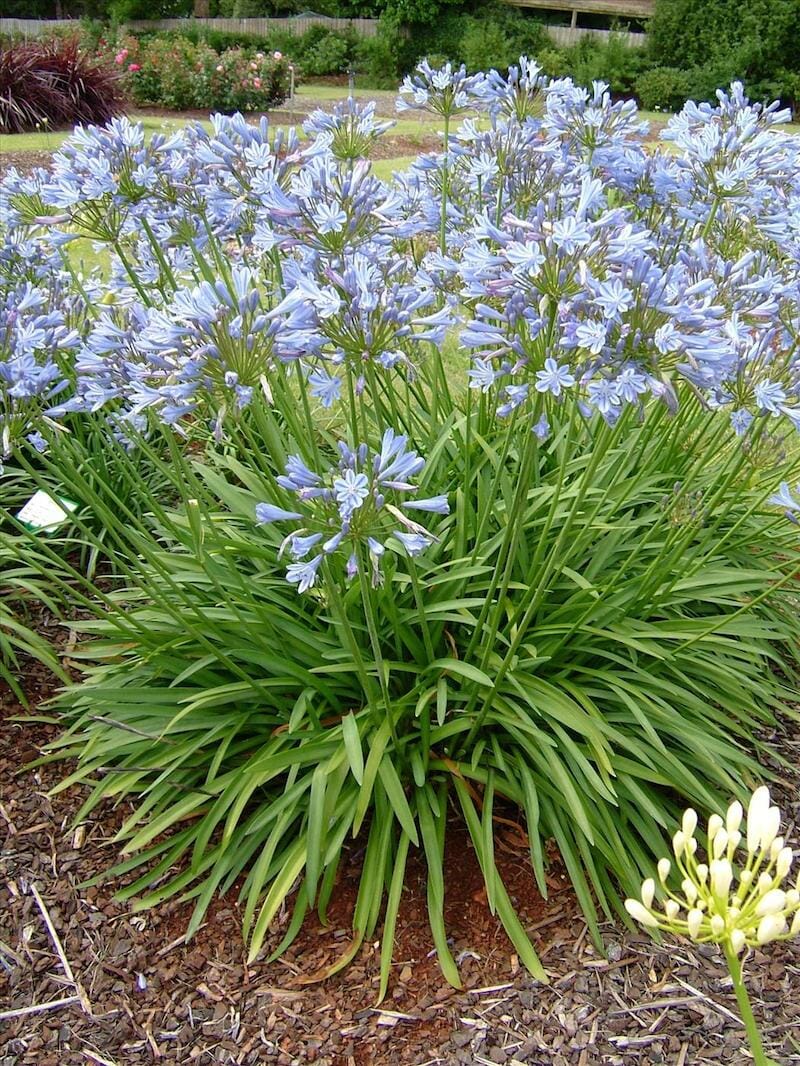Mastering the Art of Agapanthus Treatment: Vital Actions for Healthy And Balanced Growth and Vivid Blooms
In the world of gardening, the growing of agapanthus stands as a fulfilling venture for those that look for to support these elegant blooming plants. From picking the ideal selection to grasping pruning strategies, the trip towards cultivating growing agapanthus plants is diverse and holds the key to unlocking the complete capacity of these organic gems.

Choosing the Right Agapanthus Selection

When choosing the appropriate Agapanthus range for your yard, consider aspects such as climate suitability, flower color, and development routine. Agapanthus, frequently understood as Lily of the Nile or African lily, comes in a variety of shades varying from tones of purple and blue to white. Pick a flower shade that matches your existing garden scheme to create an unified landscape. Furthermore, think about the climate in your area to guarantee the Agapanthus range you pick can prosper in your certain problems. Some selections are extra tolerant of cool temperature levels, while others favor warmer climates. Understanding the development habit of different Agapanthus selections is crucial for appropriate positioning within your garden. Some selections have a clumping development habit, ideal for containers or borders, while others have an even more spreading nature, ideal for ground cover or mass growings. By very carefully examining these elements, you can pick the perfect Agapanthus selection to boost the charm of your yard.
Suitable Growing Problems
Considering the optimum ecological needs is crucial for successful Agapanthus cultivation. Agapanthus plants are delicate to cool temperatures and ought to be safeguarded from frost throughout winter months.
To guarantee healthy growth and dynamic blooms, plant Agapanthus light bulbs at a depth of about 2-4 inches and area them 8-12 inches apart. Mulching around the base of the plants aids retain wetness and subdues weed development.
Watering and Fertilizing Tips
Maintaining appropriate dampness degrees and offering necessary nutrients are essential elements in the treatment regimen for Agapanthus plants. It is essential to strike an equilibrium when it comes to watering Agapanthus. If overwatered, these plants prefer regularly damp dirt however are at risk to root rot. During the growing period, water deeply when a week, ensuring the dirt is well-draining to avoid waterlogging. In hotter environments or during durations of dry spell, even more frequent watering may be essential to keep the soil equally damp. Nevertheless, lower watering in the winter season to stop water logged conditions.
Fertilizing Agapanthus is essential for promoting healthy growth and prolific blooms. Apply a well balanced plant food, such as a 10-10-10 formula, in the early springtime as brand-new growth arises. By following these watering and fertilizing suggestions, you can ensure your Agapanthus plants thrive and produce vivid, durable blossoms.
Pruning Techniques for Agapanthus
Pruning Agapanthus plants at the suitable times and with correct techniques is vital for maintaining their wellness and promoting ideal development and blooming. The suitable time to prune Agapanthus remains in late wintertime or early spring before new growth emerges. Beginning by eliminating any type of yellowing or dead leaves near the base of the plant. Cut them as short as feasible without damaging the arising shoots.
For flowered stems, wait until the blooms have actually withered and after that trim them back to the base. This not only cleans up the plant's look yet additionally motivates the development of brand-new blossom buds. Deadheading spent blossoms can also reroute the plant's energy into creating more blooms rather than setting seeds. However, if you intend to collect seeds for proliferation, leave some flowers to fully grown and dry on the plant.
Bear in mind to make use of tidy, sharp tools to make exact cuts and reduce the threat of introducing diseases. Agapanthus. Normal trimming will certainly help keep your Agapanthus looking healthy and cool while making certain an abundant display of gorgeous blooms
Managing Common Parasites and Diseases
After making certain proper pruning strategies for Agapanthus, it is vital to attend to typical bugs and conditions that can influence the health and vitality of these plants. Agapanthus plants are generally sturdy but can still succumb to particular concerns. One common bug that affects Agapanthus is the Agapanthus gall midge. This small, orange fly lays its eggs in the vegetation, leading to altered development and blossom buds that fail to open up. To combat this parasite, prune and damage any type of affected plant components and take into view publisher site consideration using insecticidal soap.
In addition, Agapanthus plants can endure from origin rot if they are grown in badly draining soil. By being vigilant and taking timely action against illness and pests, you can help your Agapanthus plants thrive and produce vivid flowers. Agapanthus.

Verdict
Finally, grasping the art of agapanthus image source treatment involves selecting the best selection, offering suitable growing problems, appropriate watering and feeding, suitable pruning methods, and attending to common pests and illness. By following these crucial actions, you can make certain healthy development and vibrant blossoms for your agapanthus plants. Keep in mind to frequently monitor and maintain your plants to promote their general well-being and longevity.
To make sure healthy and balanced development and vibrant blossoms, plant Agapanthus bulbs at a depth of about 2-4 inches and area them 8-12 inches apart. By adhering to these watering and feeding suggestions, you can guarantee your Agapanthus plants prosper and create lively, additional hints lasting blooms.
One typical bug that impacts Agapanthus is the Agapanthus gall midget. In addition, Agapanthus plants can endure from root rot if they are grown in inadequately draining soil. By following these vital steps, you can ensure healthy growth and vibrant flowers for your agapanthus plants.